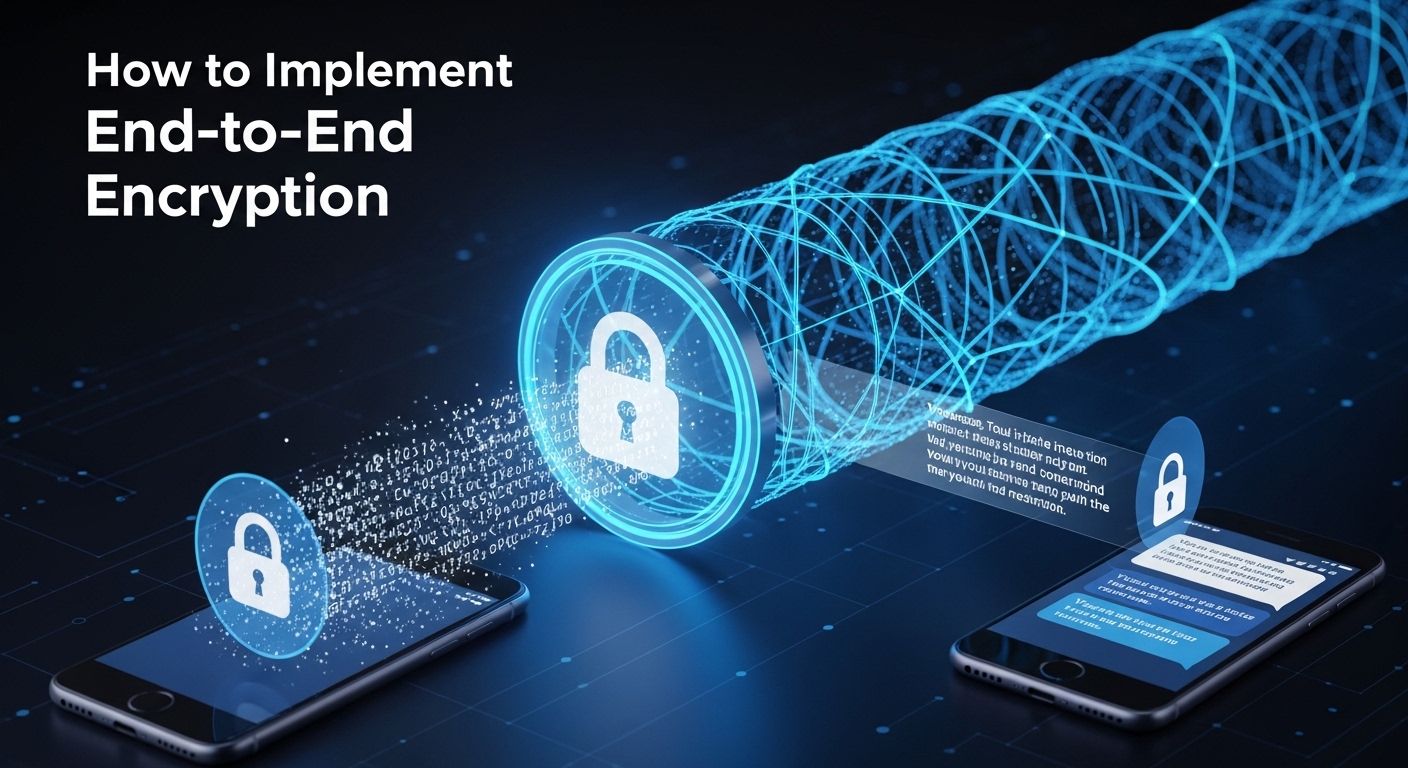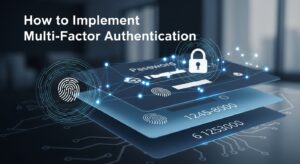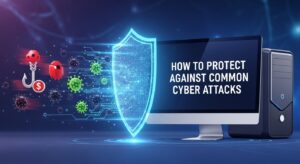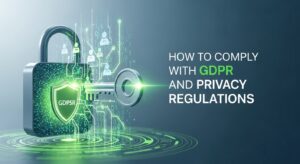End-to-end encryption has become the gold standard for protecting sensitive communications in our increasingly digital world. Whether you’re developing a messaging application, securing financial transactions, or protecting healthcare data, implementing robust end-to-end encryption is no longer optional—it’s essential.
But here’s a question that might challenge your current understanding: Do you truly know what makes end-to-end encryption different from other security measures? Most people assume any form of encryption provides the same level of protection, but that’s a dangerous misconception.
In this comprehensive guide, we’ll explore the fundamental principles behind end-to-end encryption implementation, examine real-world applications, and provide you with actionable steps to build bulletproof security into your systems.
Understanding the Foundation: What Is End-to-End Encryption?
Before diving into implementation details, let’s establish a clear understanding of what sets end-to-end encryption apart from traditional security measures.
End-to-end encryption ensures that data remains encrypted from the sender to the final recipient, with no intermediate party—including service providers—able to access the unencrypted content. This approach creates a secure tunnel where only the communicating parties hold the decryption keys.
Consider this scenario: When you send a traditional email through most providers, your message travels encrypted between your device and the email server, then from the server to the recipient’s device. However, the email provider can potentially access your message content on their servers. With end-to-end encryption implementation, even the service provider cannot decrypt your communications.
The 5 Essential Components of End-to-End Encryption Implementation
1. Key Generation and Management
The foundation of any end-to-end encryption system lies in robust key generation and management protocols. This process involves creating cryptographically secure key pairs for each participant in the communication system.
Best Practices for Key Generation:
- Use cryptographically secure random number generators
- Implement proper key derivation functions (KDFs)
- Ensure adequate key length (minimum 256 bits for symmetric keys)
- Establish secure key storage mechanisms
Modern implementations typically use elliptic curve cryptography (ECC) for public-key operations due to its efficiency and security properties. The Signal Protocol, widely regarded as the gold standard for end-to-end encryption, uses Curve25519 for key agreement and Ed25519 for digital signatures.
2. Secure Key Exchange Protocols
Once you’ve established key generation procedures, the next critical step involves securely exchanging keys between communicating parties. This process must prevent man-in-the-middle attacks while maintaining user convenience.
Key Exchange Methods:
| Method | Security Level | Complexity | Use Case |
|---|---|---|---|
| Diffie-Hellman Key Exchange | High | Medium | Real-time communications |
| RSA Key Exchange | Medium | Low | Legacy system compatibility |
| ECDH (Elliptic Curve) | Very High | Medium | Modern applications |
| Pre-shared Keys | High | High | Controlled environments |
The Double Ratchet algorithm, pioneered by Signal, provides forward secrecy by continuously generating new encryption keys for each message. This ensures that even if one key becomes compromised, past and future communications remain secure.
3. Message Encryption and Authentication
With secure key exchange established, you need robust encryption algorithms that protect both message confidentiality and integrity. End-to-end encryption implementation requires careful selection of cipher suites and authentication mechanisms.
Recommended Encryption Standards:
- AES-256-GCM for symmetric encryption
- ChaCha20-Poly1305 as an alternative stream cipher
- HMAC-SHA256 for message authentication
- Ed25519 for digital signatures
Authentication prevents tampering and ensures message origin verification. Without proper authentication, attackers could potentially modify encrypted messages, leading to serious security vulnerabilities.
4. Forward Secrecy Implementation
Forward secrecy ensures that compromising long-term keys doesn’t compromise past communications. This property is crucial for maintaining security even after potential key exposure.
Think about this: If someone gains access to your encryption keys today, should they be able to decrypt all your historical communications? Forward secrecy answers this question with a resounding “no.”
Implementation strategies include:
- Ephemeral key generation for each session
- Regular key rotation schedules
- Secure deletion of old keys
- Session-based encryption keys
5. Secure Storage and Transport
The final component involves protecting encrypted data during storage and transmission. Even with strong end-to-end encryption, vulnerabilities in storage or transport mechanisms can compromise overall security.
Security Considerations:
- Encrypted local storage for sensitive data
- Secure transmission protocols (TLS 1.3 minimum)
- Proper handling of metadata
- Protection against traffic analysis
Implementation Challenges and Solutions
Challenge 1: Performance Optimization
End-to-end encryption can introduce computational overhead, particularly in high-throughput applications. Modern implementations address this through:
- Hardware acceleration for cryptographic operations
- Efficient algorithm selection based on device capabilities
- Asynchronous encryption/decryption processes
- Optimized key management protocols
Challenge 2: User Experience Balance
Security shouldn’t come at the expense of usability. Successful end-to-end encryption implementation requires:
- Transparent key management for end users
- Intuitive verification mechanisms
- Seamless cross-device synchronization
- Clear security status indicators
Challenge 3: Regulatory Compliance
Different jurisdictions have varying requirements for encryption implementation. Consider these factors:
- Export control regulations for cryptographic software
- Data residency requirements
- Law enforcement access provisions
- Industry-specific compliance standards
Real-World Implementation Examples
Messaging Applications
Popular messaging platforms like WhatsApp, Signal, and Telegram have successfully implemented end-to-end encryption at scale. These implementations demonstrate that robust security can coexist with user-friendly interfaces.
File Storage Solutions
Cloud storage providers increasingly offer end-to-end encryption options, ensuring that even the service provider cannot access user files. Solutions like SpiderOak and pCloud Crypto showcase different approaches to encrypted file storage.
Email Security
While traditional email lacks built-in end-to-end encryption, solutions like ProtonMail and Tutanota demonstrate how to implement secure email communication using modern cryptographic standards.
Testing and Validation Strategies
Before deploying any end-to-end encryption system, comprehensive testing ensures security objectives are met:
Security Testing Checklist:
- Cryptographic algorithm verification
- Key management security audits
- Protocol implementation reviews
- Penetration testing for common vulnerabilities
- Third-party security assessments
Consider engaging professional security auditors who specialize in cryptographic implementations. Organizations like NCC Group and Trail of Bits offer specialized cryptographic auditing services.
Future Considerations: Quantum-Resistant Cryptography
As quantum computing advances, current cryptographic standards face potential threats. Forward-thinking end-to-end encryption implementations should consider:
- Post-quantum cryptographic algorithms
- Hybrid classical-quantum resistant approaches
- Migration strategies for existing systems
- Timeline considerations for quantum threat emergence
The National Institute of Standards and Technology (NIST) has recently standardized quantum-resistant algorithms, providing guidance for future-proof implementations.
Conclusion: Building Secure Communication Systems
Implementing end-to-end encryption requires careful attention to cryptographic principles, security best practices, and user experience considerations. By following the five essential components outlined in this guide—key generation, secure exchange, message encryption, forward secrecy, and secure storage—you can build robust security systems that protect user privacy and data integrity.
The investment in proper end-to-end encryption pays dividends in user trust, regulatory compliance, and long-term system security. As privacy concerns continue growing worldwide, organizations that implement robust end-to-end encryption will find themselves at a significant competitive advantage.
What aspects of end-to-end encryption implementation do you find most challenging in your specific use case? Understanding your particular requirements and constraints is crucial for selecting the most appropriate implementation approach.











